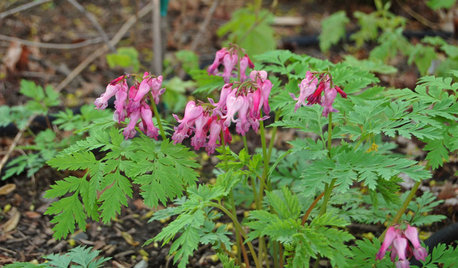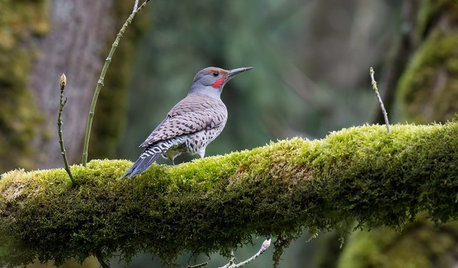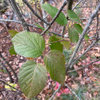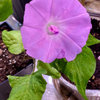Help! Ants and Bleeding Heart
BeverlyFLADeziner
10 years ago
Related Stories

LIFEYou Said It: ‘Put It Back’ If It Won’t Help Your House, and More Wisdom
Highlights from the week include stopping clutter from getting past the door, fall planting ideas and a grandfather’s gift of love
Full Story
GARDENING GUIDESGreat Design Plant: Dicentra Eximia Brightens Shady Gardens
This North American bleeding heart species blooms from spring to fall and welcomes bees and hummingbirds
Full Story
GARDENING GUIDESBackyard Birds: Healthy Home Habitats for Northern Flickers
These colorful woodpeckers found across the U.S. and Canada love berries, seeds and ants and often nest in deep burrows in trees
Full Story
LIFETell Us: What Made You Fall for Your Kitchen?
Show the heart of your home some love for Valentine’s Day
Full Story
DECORATING GUIDESRoom of the Day: A Fresh Mix in a Traditional Colonial
A designer combines rich colors and fabrics with lighter pieces in a living room that's the heart of a North Carolina home
Full Story
KITCHEN DESIGNThe Best of My Houzz: 20 Creative Kitchen Islands
Nixing ready made for readily imaginative, these homeowners fashioned kitchen islands after their own hearts
Full Story
HOUSEKEEPINGWhat's That Sound? 9 Home Noises and How to Fix Them
Bumps and thumps might be driving you crazy, but they also might mean big trouble. We give you the lowdown and which pro to call for help
Full Story
KITCHEN DESIGNHow to Pick Your Important Kitchen Appliances
Find the ideal oven, refrigerator, range and more without going nutty — these resources help you sort through your the appliance options
Full Story
GARDENING GUIDESHow to Keep Your Citrus Trees Well Fed and Healthy
Ripe for some citrus fertilizer know-how? This mini guide will help your lemon, orange and grapefruit trees flourish
Full Story
KITCHEN DESIGNHow to Pick a Kitchen Backsplash That Wows
Design your ideal backsplash with help from these Houzz guides and inspiring ideas for every kitchen style
Full StorySponsored
More Discussions









morz8 - Washington Coast
BeverlyFLADezinerOriginal Author
Related Professionals
Bridgetown Landscape Architects & Landscape Designers · Manhattan Beach Landscape Architects & Landscape Designers · Canton Landscape Contractors · Aloha Landscape Contractors · Chelmsford Landscape Contractors · Fairview Landscape Contractors · Gallatin Landscape Contractors · Holland Landscape Contractors · La Verne Landscape Contractors · Lebanon Landscape Contractors · Medford Landscape Contractors · Mendota Heights Landscape Contractors · Riverhead Landscape Contractors · Wickliffe Landscape Contractors · Norridge Landscape ContractorsTiffany, purpleinopp Z8b Opp, AL
morz8 - Washington Coast
Tiffany, purpleinopp Z8b Opp, AL
BeverlyFLADezinerOriginal Author
Tiffany, purpleinopp Z8b Opp, AL
BeverlyFLADezinerOriginal Author
Tiffany, purpleinopp Z8b Opp, AL